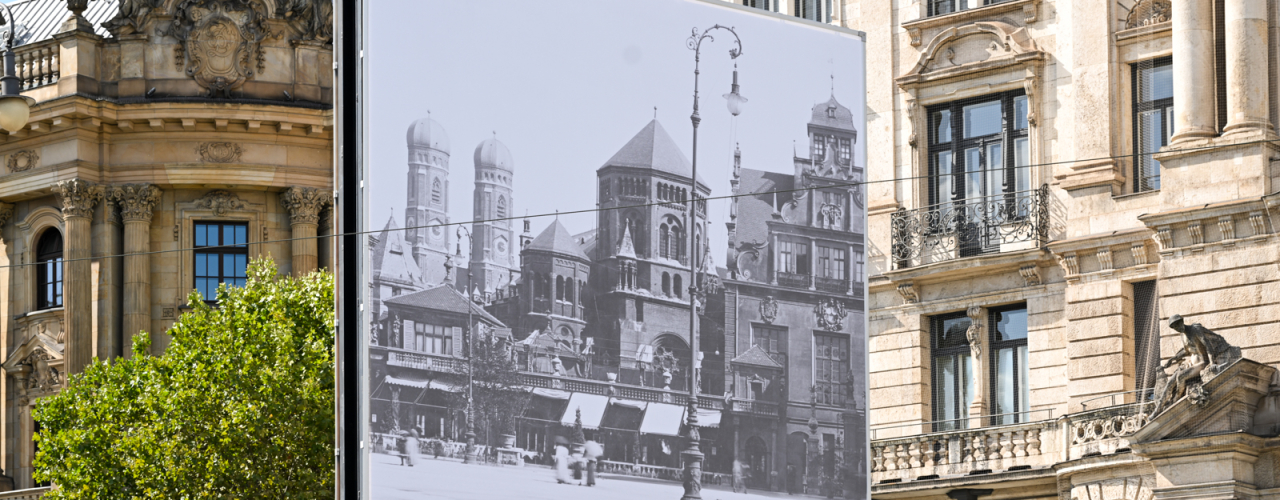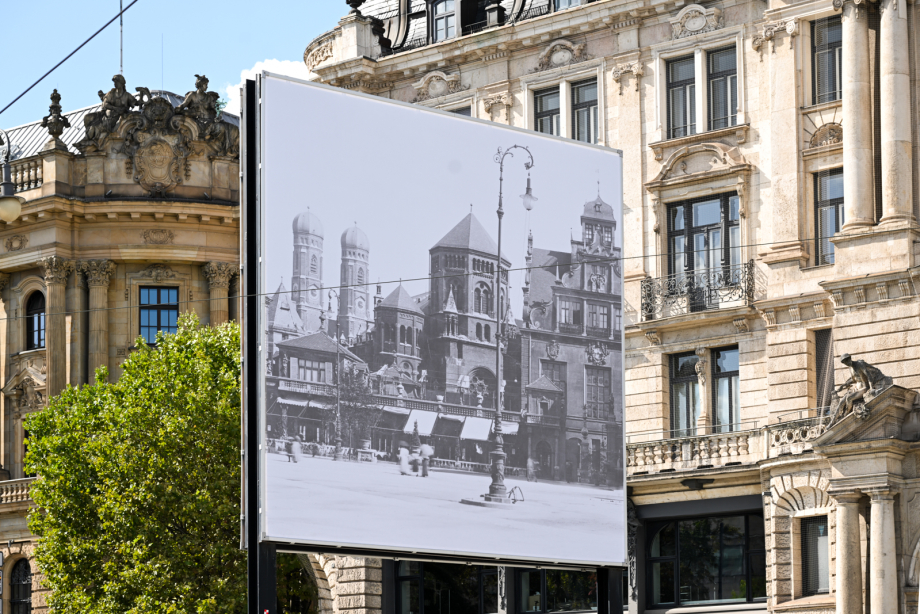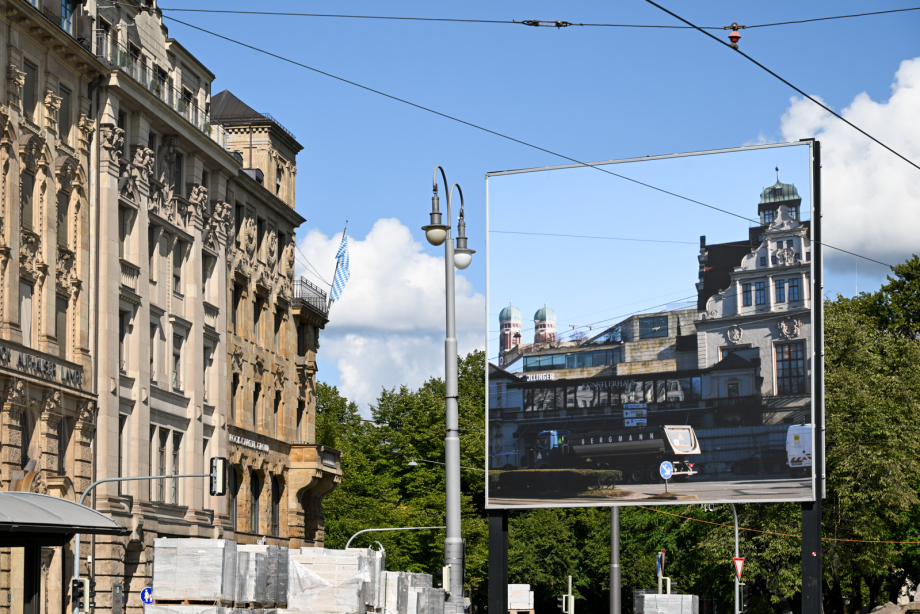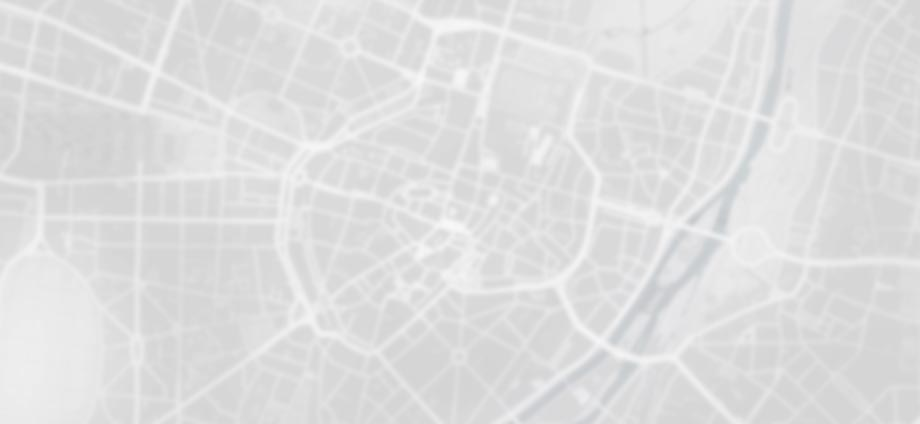The main synagogue of the Munich Jewish Community, founded in 1815, was in the immediate vicinity of the Künstlerhaus and the Palace of Justice, within sight of the Frauenkirche. The third biggest synagogue in the German Empire was a colossal structure designed in neo-Romanesque architecture by Albert Schmidt. The building dominated the cityscape from its inauguration on September 16, 1887 until its demolition in June 1938, commissioned by the Munich city administration. Today, the memorial stone designed by Herbert Peters in 1969 on the corner of Herzog-Max-Straße and Maxburgstraße commemorates the synagogue, its destruction and the persecution and murder of the Jews of Munich.
A historical image of an architecturally notable structure from 1911 is displayed on one side of the billboard, and a more current image, shot in 2021 by Alexander Steig from roughly the same vantage point. The juxtaposition highlights the urban-social void that has existed since 1938.
The work is particularly relevant thanks to the discovery of stone fragments from the former main synagogue, which were recovered in June 2023 below the Großhesseloher Weir south of Munich. This also included the tablets of the law attached to the east wall. The stones were installed in the Isar in 1956 by the same construction company that demolished the main synagogue in 1938. The find is currently being scientifically processed and represents another document for the “empty space” that was violently created in 1938 and which is the subject of the work of art on the billboard on the Kunstinsel.
Alexander Steig, born 1968 in Hanover, lives and works in Munich and Berlin.



